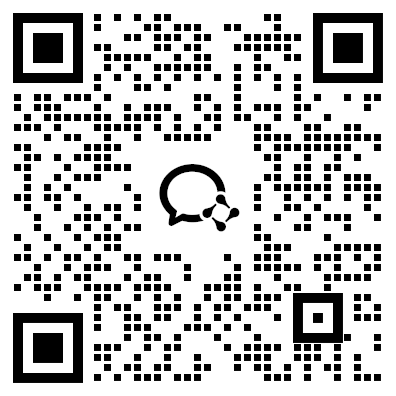2014-07-31 16:43:30 来源:新东方在线整理托福资料下载
TPO 6 Lecture 3 Creative Writing
Narrator : Listen to part of a lecture in a creative writing class.
Professor : Alright everybody, the topic for today is, well, we're gonna take a look at how to start creating the characters for the story you're writing. One way of doing that is to come up with what's called "a character sketch", I don't mean a sketch like a drawing, I guess that's obvious. It's um…it's a…a sketch as a way of getting started on defining your characters' personalities. To begin, how do we create fictional characters? We don't just pull them from thin air, do we? I mean we don't create them out of nothing. We base them, consciously or unconsciously, we base them on real people, or we blend several people's traits, their attributes into one character. But when people think fiction, they may assume the characters come from the author's imagination. But the writer's imagination is influenced by… by real people, could be anyone, so, pay attention to the people you meet, someone in class, at the gym, that guy who is always sitting in the corner of the coffee house, um… your cousin, who's always getting into dangerous situations. We're pulling from reality, gathering bits and pieces of real people. You use these people, and the bits of behavior or characteristics as a starting point as you begin to sketch out your characters. Here is what you should think about doing first. When you begin to formulate a story, make a list of interesting people you know or have observed. Consider why they're unique or annoying. Then make notes about their unusual or dominant attributes. As you create fictional characters, you'll almost always combine characteristics from several different people on your list to form the identity and personality of just one character. Keeping this kind of character sketch can help you solidify your character's personality, so that it remains consistent throughout your story. You need to define your characters, know their personalities so that you can have them acting in ways that are predictable, consistent with their personalities. Get to know them like a friend, you know your friends well enough to know how they'll act in certain situations, right? Say you have three friends, their car runs out of gas on the highway. John gets upset. Mary remains calm. Teresa takes charge of handling the situation. And let's say, both John and Mary defer to her leadership. They call you to explain what happen. And when John tells you he got mad, you're not surprised, because he always gets frustrated when things go wrong. Then he tells you how Teresa took charge, calmed him down, assigned tasks for each person and got them on their way. Again, you're not surprised. It's exactly what you'd expect. Well, you need to know your characters, like you know your friends. If you know a lot about a person's character, it's easy to predict how they'll behave. So if your character's personalities are well defined, it will be easy for you as the writer to portray them realistically…er… believably, in any given situation. While writing character sketches, do think about details. Ask yourself questions, even if you don't use the details in your story, um…what does each character like to eat, what setting does each prefer, the mountains, the city, what about educational background, their reactions to success or defeat, write it all down. But, here I need to warn you about a possible pitfall. Don't make you character into a stereotype. Remember the reader needs to know how your character is different from other people who might fall in the same category. Maybe your character loves the mountains and has lived in a remote area for years. To make sure he is not a stereotype, ask yourself how he sees life differently from other people who live in that kind of setting. Be careful not to make him into the cliché of the "ragged mountain dweller". Okay, now, I'll throw out a little terminology. It's easy stuff. Major characters are sometimes called "round characters". Minor characters are sometimes called, well, just the opposite, "flat". A round character is fully developed; a flat character isn't, character development is fairly limited. The flat character tends to serve mainly as a motivating factor. For instance, you introduce a flat character who has experienced some sort of defeat. And then your round, your main character who loves success and loves to show off, comes and boasts about succeeding and jokes about the flat character's defeat in front of others, humiliates the other guy. The flat character is introduced solely for the purpose of allowing the round character to show off.
本文关键字: 托福听力TPO6原文 托福听力TPO6文本

 资料下载
资料下载
2021-2025托福机经试题|答案|范文下载
发布时间:2024-02-21关注新东方在线托福
回复【XDF】获取
托福全科备考资料大礼包
发布时间:2024-02-21关注新东方在线托福
回复【XDF】获取
托福正价课试听课程包
发布时间:2024-02-21关注新东方在线托福
回复【XDF】获取
托福定制备考规划
发布时间:2024-02-21关注新东方在线托福
回复【XDF】获取
托福TPO免费模考
发布时间:2024-02-21关注新东方在线托福
回复【XDF】获取
托福免费水平测试
发布时间:2024-02-21关注新东方在线托福
回复【XDF】获取
托福写作新题型模拟题+范文汇总[ETS发布]
发布时间:2023-07-30关注新东方在线托福
回复【XDF】获取
2023全年托福机经PDF版下载
发布时间:2023-06-17关注新东方在线托福
回复【XDF】获取
2022全年托福机经PDF版下载
发布时间:2023-06-17关注新东方在线托福
回复【XDF】获取
2022全年写作托福机经整理
发布时间:2023-01-13关注新东方在线托福
回复【XDF】获取
2022年托福考后题目回忆
发布时间:2023-01-13关注新东方在线托福
回复【XDF】获取
托福口语黄金80题附录音
发布时间:2023-01-13关注新东方在线托福
回复【XDF】获取
新东方IBT写作网络课堂录音[.rar]
发布时间:2023-01-13关注新东方在线托福
回复【XDF】获取
21天托福听力提升计划
发布时间:2023-01-13关注新东方在线托福
回复【XDF】获取
不怕跑题偏题,这份写作资料请收好
发布时间:2023-01-13关注新东方在线托福
回复【XDF】获取
托福阅读提分技巧锦囊妙计
发布时间:2023-01-13关注新东方在线托福
回复【XDF】获取
口语拖后腿?因为你缺少这套万能句式资料
发布时间:2019-11-01关注新东方在线托福
回复【XDF】获取
攻破托福听力难关的资料包
发布时间:2023-01-13关注新东方在线托福
回复【XDF】获取
看剧学英语,经典美剧一键获取
发布时间:2019-11-01关注新东方在线托福
回复【XDF】获取
原版外刊资源合集|精心打包整理
发布时间:2019-11-01关注新东方在线托福
回复【XDF】获取

关注新东方在线托福,
回复【XDF】获取大礼包

版权及免责声明
1,"新东方在线"上的内容,包括文章、资料、资讯等, 本网注明"稿件来源:新东方在线"的,其版权 均为"新东方在线"或北京新东方迅程网络科技有限公司所有 ,任何公司、媒体、网站或个人未经授权不得转载、链接、转贴或以其他方式使用。已经得到 "新东方在线"许可 的媒体、网站,在使用时必须注明"稿件来源:新东方",违者本网站将依法追究责任。
2, "新东方在线" 未注明"稿件来源:新东方"的 文章、资料、资讯等 均为转载稿,本网站转载出于传递更多信息之目的,并不意味着赞同其观点或证实其内容的真实性。如其他媒体、网站或个人从本网站下载使用,必须保留本网站注明的"稿件来源",并自负版权等法律责任。如擅自篡改为 " 稿件来源:新东方 " ,本网站将依法追究其法律责任。
3,如本网转载稿涉及版权等问题,请作者见稿后在两周内与新东方在线联系。


 资料下载
资料下载
关注新东方在线托福
回复【XDF】获取
关注新东方在线托福
回复【XDF】获取
关注新东方在线托福
回复【XDF】获取
关注新东方在线托福
回复【XDF】获取
关注新东方在线托福
回复【XDF】获取
关注新东方在线托福
回复【XDF】获取
关注新东方在线托福
回复【XDF】获取
关注新东方在线托福
回复【XDF】获取
关注新东方在线托福
回复【XDF】获取
关注新东方在线托福
回复【XDF】获取
关注新东方在线托福
回复【XDF】获取
关注新东方在线托福
回复【XDF】获取
关注新东方在线托福
回复【XDF】获取
关注新东方在线托福
回复【XDF】获取
关注新东方在线托福
回复【XDF】获取
关注新东方在线托福
回复【XDF】获取
关注新东方在线托福
回复【XDF】获取
关注新东方在线托福
回复【XDF】获取
关注新东方在线托福
回复【XDF】获取
关注新东方在线托福
回复【XDF】获取

关于我们 - 商务合作 - 广告服务 - 代理商区域 - 客服中心 - 在线留言 - 退换货说明 - 合作伙伴 - 联系我们 - 人员招聘 - 网站地图 - 热点关注 - 寓乐优学
新东方教育科技集团旗下成员公司 全国客服专线:400-676-3300
Copyright (C) 2000-2013 koolearn.com Inc. All rights reserved. 新东方在线 版权所有
京ICP证050421号 京ICP备05067669号 京公网安备11010802017616号 网络视听许可证0110531号